Art Nouveau
1/24
There's no tags or description
Looks like no tags are added yet.
Name | Mastery | Learn | Test | Matching | Spaced |
|---|
No study sessions yet.
25 Terms
Art Nouveau style
A style of fine and applied arts characterized by fluid, undulating motifs often derived from natural forms. "New Art", original art and not from the past periods.
Style Guimard
A version of Art Nouveau in France named after Hector Guimard.
Stile Floreale
Art Nouveau in Italy which means "floral style".
Stile Liberty
British version of Art Nouveau named after British designer Arthur Lassen by Liberty from the Liberty & Co.
Modernismo
Spanish version of Art Nouveau
Sezzesionstil
Art Nouveau in Austria (Vienna Secession)
Jugendstijl
Derived from a periodical called Die Jugend (The Youth), which was essentially founded in Munich in 1869, but the style is essentially identical to the Art Nouveau directions practiced elsewhere in Europe.
Gustav Klimt
Austrian painter, founder of the school of painting known as Vienna Secession. After studying at the Vienna School of Decorative Arts, he opened an independent studio specializing in the execution of mural paintings. Works: The Kiss, Adele Block-Bauer I
Alphonse Mucha
Art Nouveau illustrator and painter noted for his posters of idealized female figures. Works: F. Champenois Imprimeur-Editeur, Le Zodiaque, Poster of Maude Adams as Joan of Arc
Hotel Tassel
Design by Victor Horta; known for its highly decorated stairwell which makes a refined play on the vegetable and flower forms.
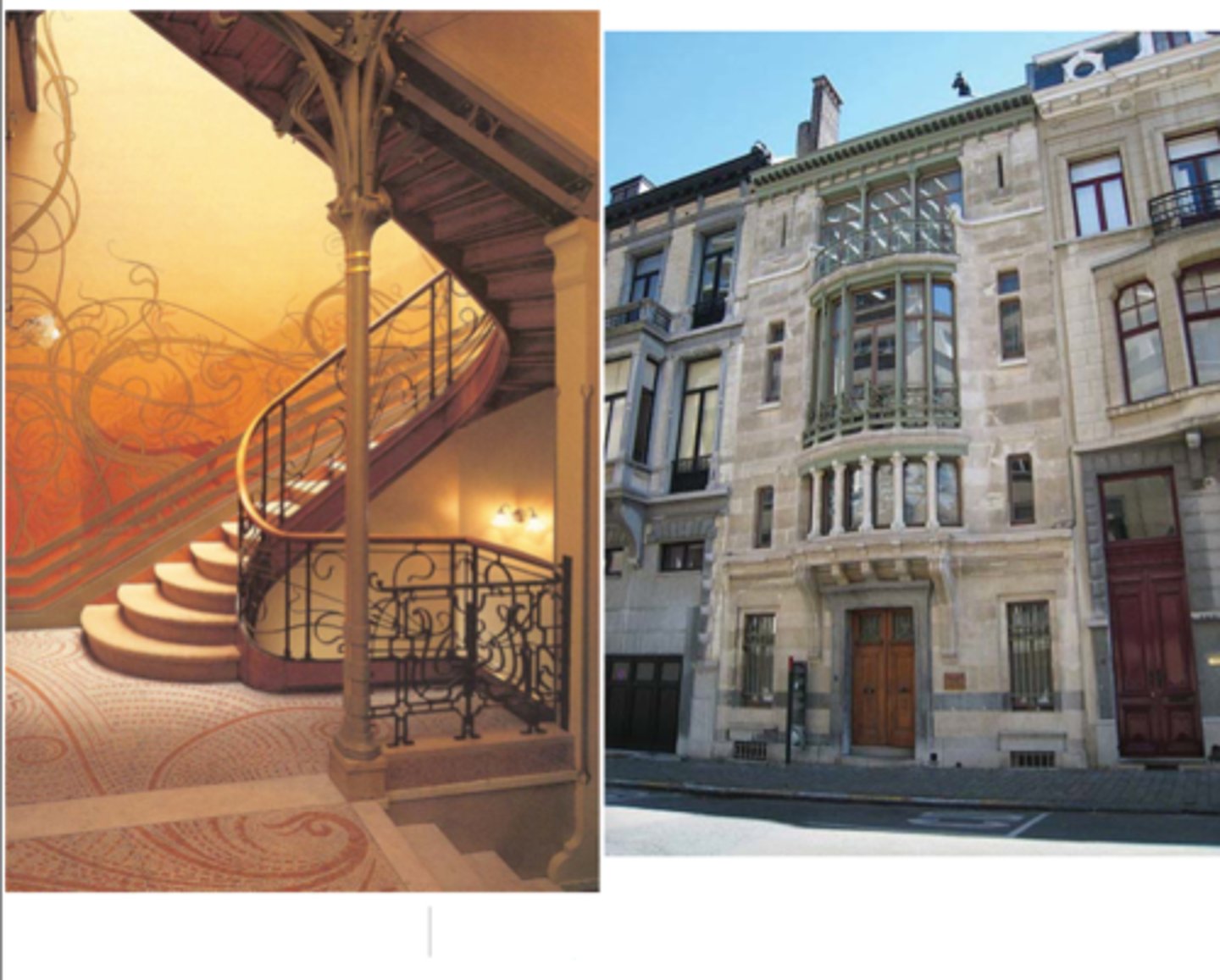
Casa Mila
Designed by Antonio Gaudi; informally known locally as La Pedrera (the rock quarry). It is a large, six-story apartment house built around open courtyards.
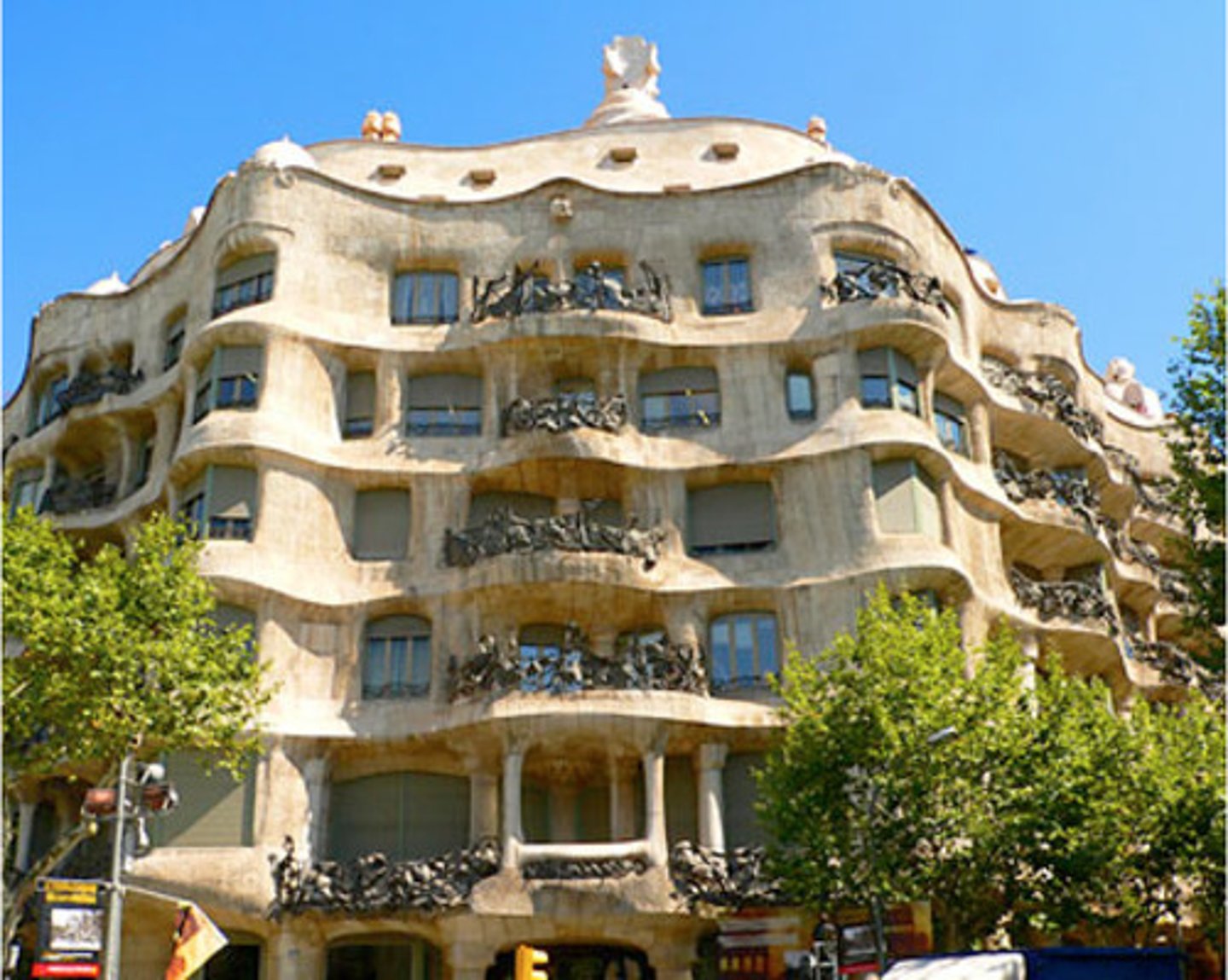
La Sagrada Familia
Designed by Antonio Gaudi; a tall building of stone vegetation. It is expected to be completed in 2026.
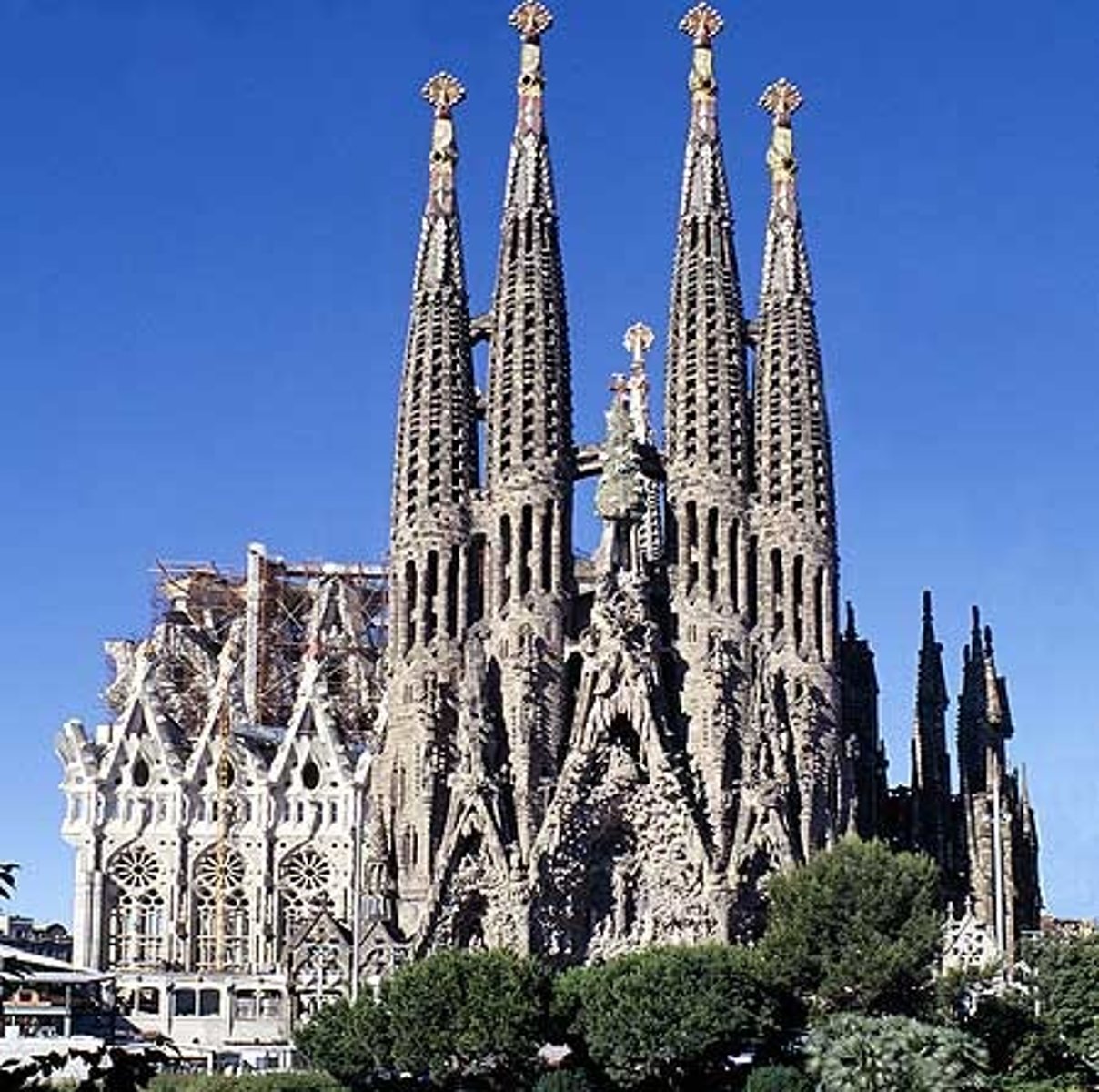
Paris Metro Entrances
Designed by Hector Guimard; 141 models of these were created between 1900 and 1913. The forms draw their inspiration from nature; most notable are the plant stems that support the signs.
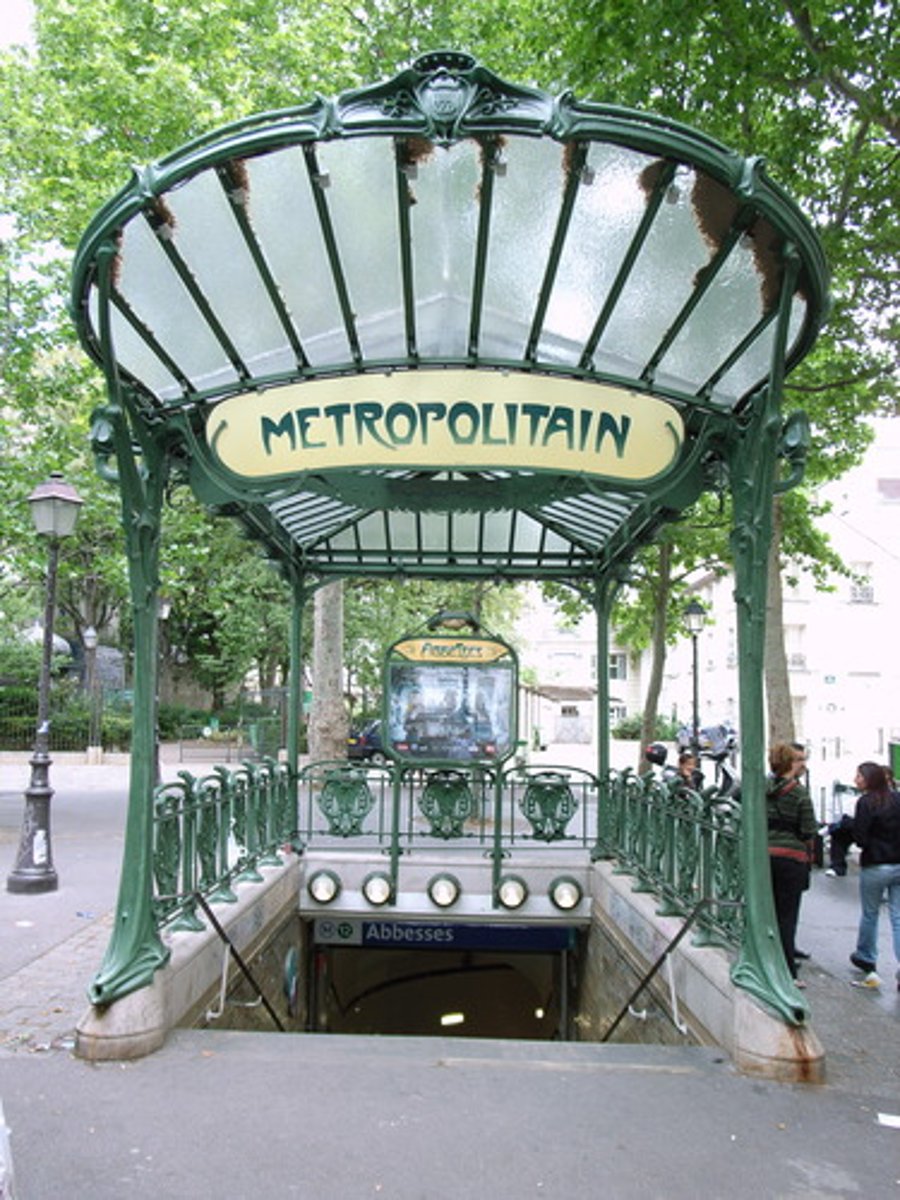
Style Nouille
Noodle style for the sinuous interlacing lines
Horta House
Designed by Victor Horta; His own house with its asymmetrical façade with twisted iron balcony supports and large glass windows, Horta was able to design every detail—furniture, light fixtures, stained- glass panels, door and window frames, even hardware—so that every element is an expression of Art Nouveau, curvilinear, nature- related decorative detail.
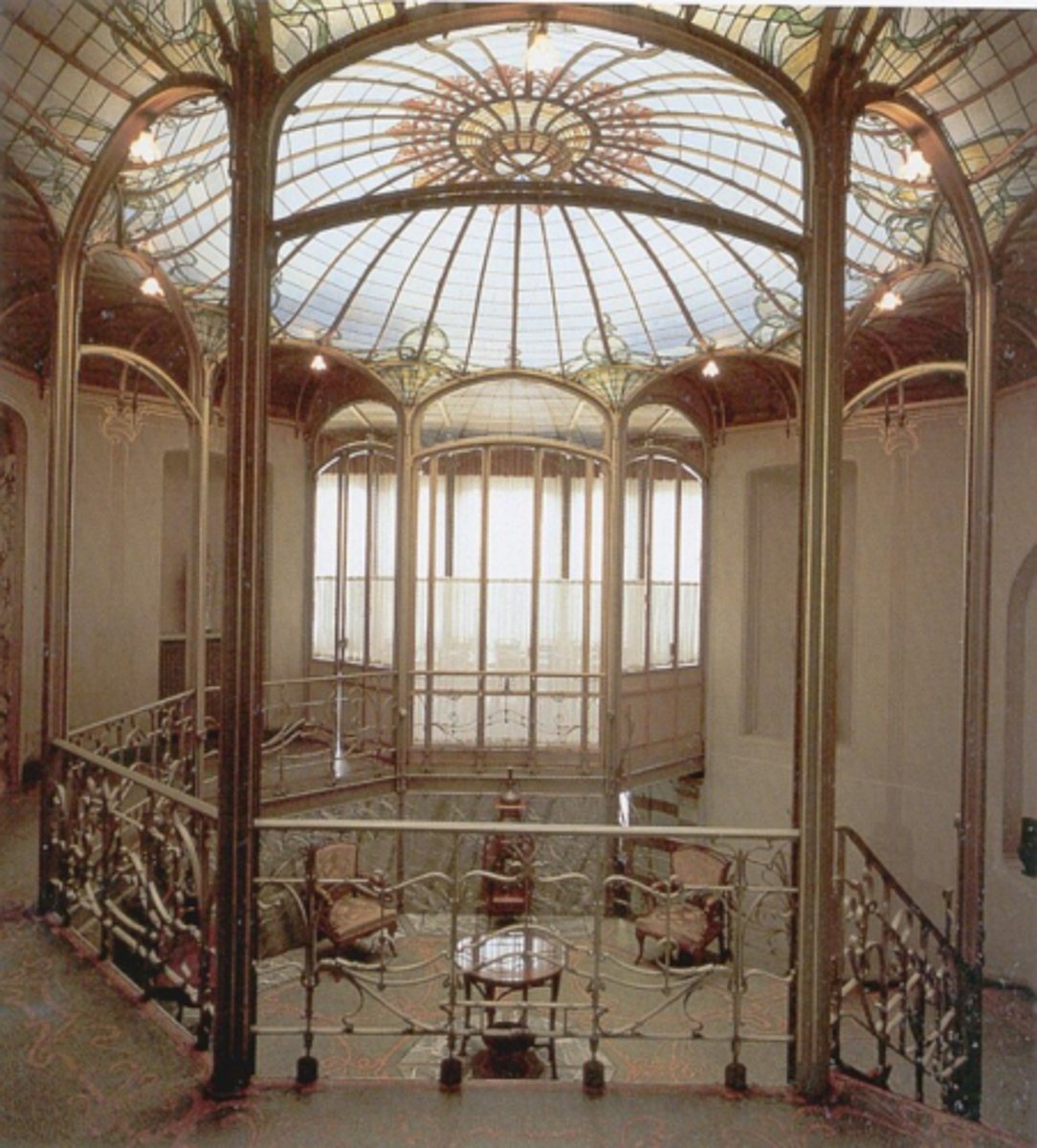
Casa Batlló
A building in the center of Barcelona. It was designed by Antonio Gaudí who stands out as the inventor of a highly personal vocabulary of flowing curves and unusual decorative details. This building included a new façade of complex bonelike forms with a fantastic roof line and, for some apartments, remarkable interiors.
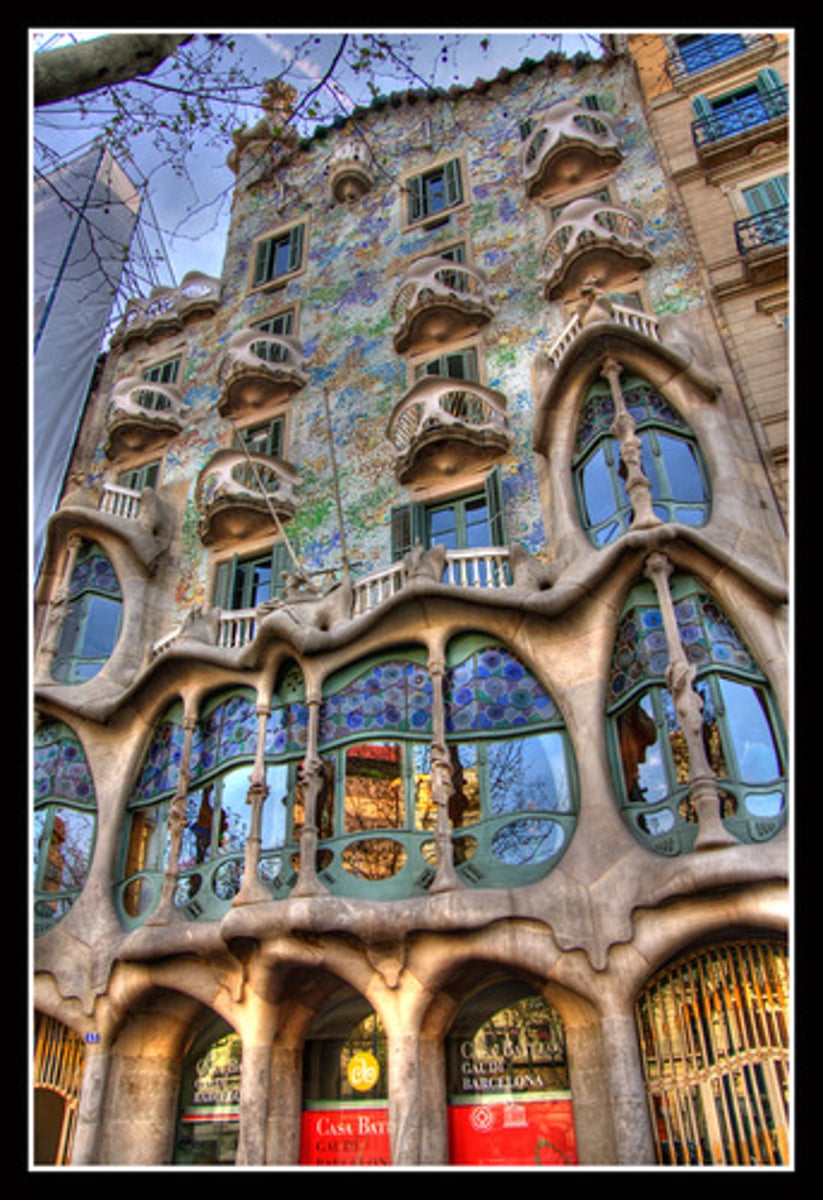
Femme fleur
Quintessentially French Art Nouveau, it is a half-woman and half-flower. The image of a dreamy maiden with flowing hair, much loved by symbolist poets and artists, was usually entwined with swirling plant tendrils and appeared on metalware, posters, and ceramics.
Henri Van de Velde
He considered himself a direct link with the English Arts and Crafts style helped to spread the movement in Belgium, France, and Germany and its considered the spokesperson for Art Nouveau. He wrote about function and structural clarity, his furniture show little evidence of these qualities.
Lady's bureau
Desk designed by Henri Van de Velde; a mahogany desk with an organic sweeping shape that is characteristic of his streamlined style.
Antonio Gaudi
He was one of the most creative and inventive Art Nouveau designers working in Barcelona. His style focused on organic, undulating lines. He used forms similar to that of the human skeleton.
Emile Galle
The first great exponent of Art Nouveau in France. He was a botanist and his designs were inspired by nature as well as Japanese designs. He was most famous for glass accessories, his Ecole de Nancy was a premier decorative arts center of the time.
Eugene Gaillard
One of the most prominent Art Nouveau furniture designers. He was greatly influenced by Rococo styles. He tended towards classical forms and his motifs were abstracted plant forms.
Louis Majorelle
Art Nouveau designer known for his nenuphar or water lily motif. He was a specialist in the design of furniture using carving, inlay, and ormolu or other metal decorative elements; the curving themes were generally based on floral pattern.
Josef Hoffman
He had a long career in architecture and design that extended from the early days of the Secession movement into twentieth-century modernism. His design moved toward strict rectangularity (he usually made his drawings on graph paper); themes of small squares in patterns for textiles and papers, for perforations in metalware, and as ornament in architectural contexts were common.
Louis Comfort Tiffany
Highly influential Art Nouveau figure in America, he is the son of the founder of the well-known New York jewelry firm. Toward the end of the 1870s he became increasingly interested in the decorative arts, and in 1897 he established the interior decorating firm Louis C. Tiffany & Associated Artists.